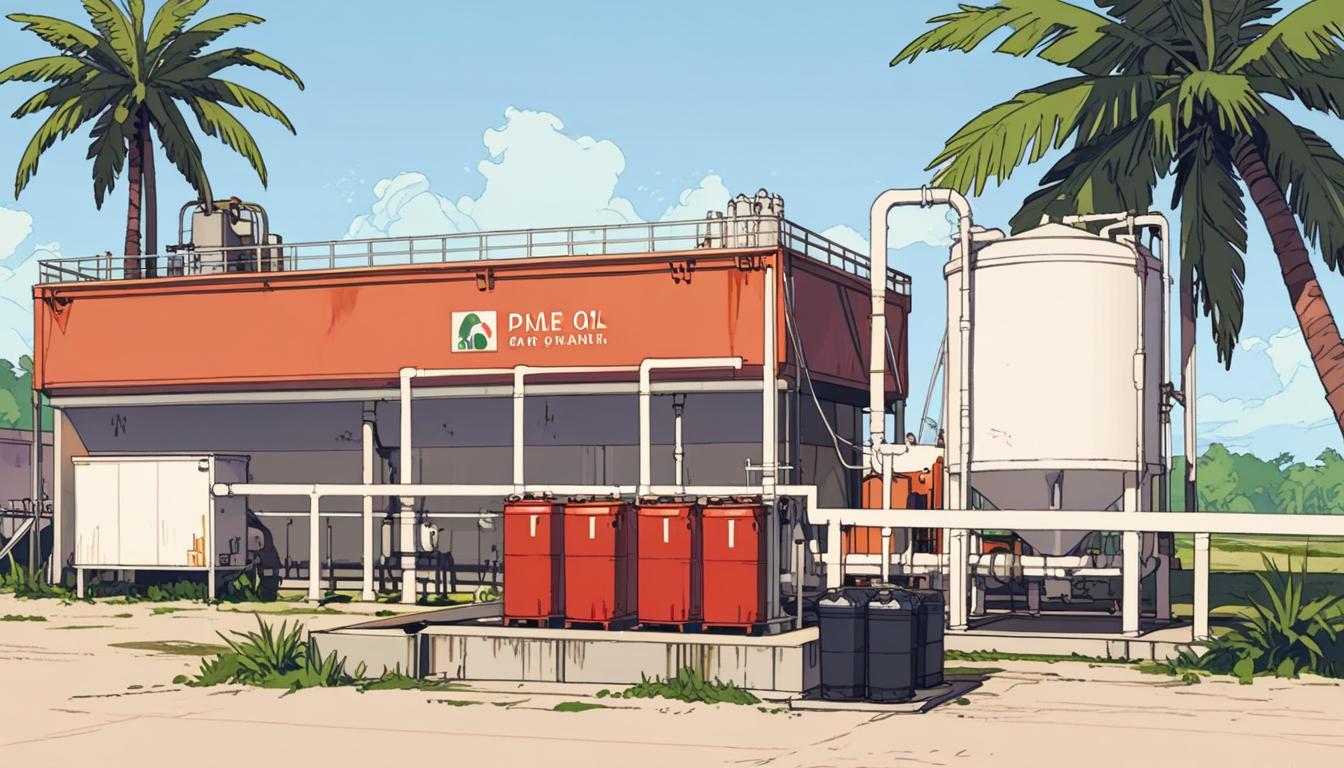A report highlights potential misrepresentation of palm oil mill effluent in Europe’s biofuel supply, raising questions about sustainability incentives and compliance.
Concerns surrounding the legitimacy of palm oil mill effluent (POME) in the European biofuel market have arisen following a report from Transport & Environment (T&E). This organisation’s analysis scrutinises the use of POME, a waste product generated during palm oil production, noting that it has been classified under EU law as a residue eligible for sustainability incentives. The report, however, suggests a troubling possibility: a significant portion of the POME reported in Europe’s biofuel mix may actually be conventional palm oil misrepresented as waste.
In 2023, T&E noted that over 2 million tonnes of POME oil were consumed within European biofuels, which starkly contrasts the estimated global availability of only 1 million tonnes. Cian Delaney, a policy officer at T&E, stated, “It appears a lot of POME could be just palm oil in disguise,” highlighting concerns about emissions savings associated with renewable diesel or hydrotreated vegetable oil (HVO). Delaney called for the removal of policy incentives that facilitate the entry of questionable biofuel feedstocks into the EU market.
HVO is currently marketed as a renewable diesel that can offer emissions savings of up to 95% compared to traditional fossil diesel. It has garnered popularity among fleet operators across Europe, who seek to lower their carbon footprints without needing significant vehicle modifications.
The transition from conventional palm oil to waste-based alternatives, such as used cooking oil and animal fats, has been facilitated by the EU’s decision to phase out palm-based biofuels by 2030. Following this directive, the use of palm oil in EU biofuels dropped from a peak of approximately 3 million tonnes in 2019 to an 80% reduction by the end of 2023. T&E reported that these waste and residue-based feedstocks now constitute 40% of EU biofuels. However, the organisation cautioned that without adequate oversight, conventional palm oil might be re-entering the market under the guise of waste products.
The consumption of POME in biofuels has been notably concentrated in four European countries: Spain, Italy, the UK, and Germany. T&E’s study indicated that a third of biofuels consumed in Spain were derived from POME, while Italy relied on it for nearly 20% of its biofuels. Germany witnessed a fourfold increase in POME consumption from 2021 to 2022, stabilising in 2023 despite lower prices and increased imports. The UK was also recognised as a significant consumer of POME-based fuels. The concentration of POME use in these countries could expose them to potential regulatory or trade ramifications if the current volumes of POME feedstocks are determined to be non-compliant with EU sustainability standards.
Additionally, the surging POME use has contributed to rising prices within commodity markets, with T&E reporting that by mid-2024, POME prices had escalated to 90% of conventional palm oil prices. This development raises questions regarding POME’s classification as a waste residue, as such a distinction plays a crucial role under EU renewable energy regulations. Waste feedstocks benefit from advantages such as double-counting towards renewable targets and eligibility for increased subsidies. Should POME’s classification shift, it could result in heightened costs and disqualified financial incentives for companies reliant on this material.
T&E’s study emphasised a mismatch between the palm oil export data from Indonesia and the claims of supply. The Indonesian government’s recent figures indicated that POME exports in 2023 and 2024 far surpassed its self-reported production capacity, reinforcing the possibility that some exported POME may not be authentic waste but rather mislabelled palm oil or a mixture of palm-based components.
In response to these findings, T&E has called for a revision of policies that currently favour POME-based fuels and an enhancement of verification mechanisms to maintain the integrity of biofuel feedstocks. The report poses a dilemma for the logistics and road transport sectors, which face growing pressure to lessen emissions while transitioning away from fossil fuels. HVO has been portrayed as a sustainable solution; yet, with increasing scrutiny regarding the validity of these fuels, transport operators may need to reassess their procurement strategies, weighing the risks associated with non-compliance and reputational damage against the drive for green alternatives.
Source: Noah Wire Services
- https://safety4sea.com/te-investigating-fraud-and-discrepancies-in-eu-biofuels/ – This article supports concerns about potential fraud in the use of Palm Oil Mill Effluents (POME) in EU biofuels, noting the shift towards waste-based alternatives and discrepancies in reported POME volumes.
- https://www.healthandsafetyinternational.com/article/1913590 – It reports on T&E’s findings that the use of POME in EU biofuels exceeds global supply estimates, suggesting possible mislabelling of palm oil as POME, and highlights the need for stricter oversight in the biofuel industry.
- https://www.biofuelsdigest.com/bdigest/te-launches-new-briefing-on-concerns-about-pome-import-fraud/ – This article corroborates T&E’s concerns about potential fraud and discrepancies in POME volumes used in EU biofuels, emphasizing the need for enhanced oversight and stricter regulations.
- https://www.expanamarkets.com/insights/article/european-biofuels/ – It discusses the suspicions of fraud involving palm oil and POME in the European biofuel sector, highlighting concerns about non-EU suppliers misrepresenting materials and impacting EU producers.
- https://www.belganewsagency.eu/belgium-backs-call-for-european-inquiry-into-biofuel-fraud – The article supports the call for a European investigation into suspected fraud in biofuels made from palm oil waste, with Belgium backing Ireland’s request for a comprehensive investigation.
Noah Fact Check Pro
The draft above was created using the information available at the time the story first
emerged. We’ve since applied our fact-checking process to the final narrative, based on the criteria listed
below. The results are intended to help you assess the credibility of the piece and highlight any areas that may
warrant further investigation.
Freshness check
Score:
8
Notes:
The narrative references recent events, such as T&E’s 2023 report and data up to mid-2024, indicating a relatively fresh context. However, it does not include very recent developments past mid-2024.
Quotes check
Score:
7
Notes:
Direct quotes from Cian Delaney, a policy officer at T&E, are present. While these quotes seem original, a lack of confirmation from earlier sources means their first use could be within this narrative.
Source reliability
Score:
9
Notes:
The narrative originates from a reputable news source and cites Transport & Environment, a reliable organization in environmental policy.
Plausability check
Score:
8
Notes:
The claims appear plausible, especially regarding EU policies and environmental initiatives. However, some assertions (e.g., the authenticity of POME exports) are difficult to verify without further evidence.
Overall assessment
Verdict (FAIL, OPEN, PASS): PASS
Confidence (LOW, MEDIUM, HIGH): HIGH
Summary:
The narrative appears to be based on recent, plausible information with reliable sourcing, although some claims about POME authenticity require additional verification.













